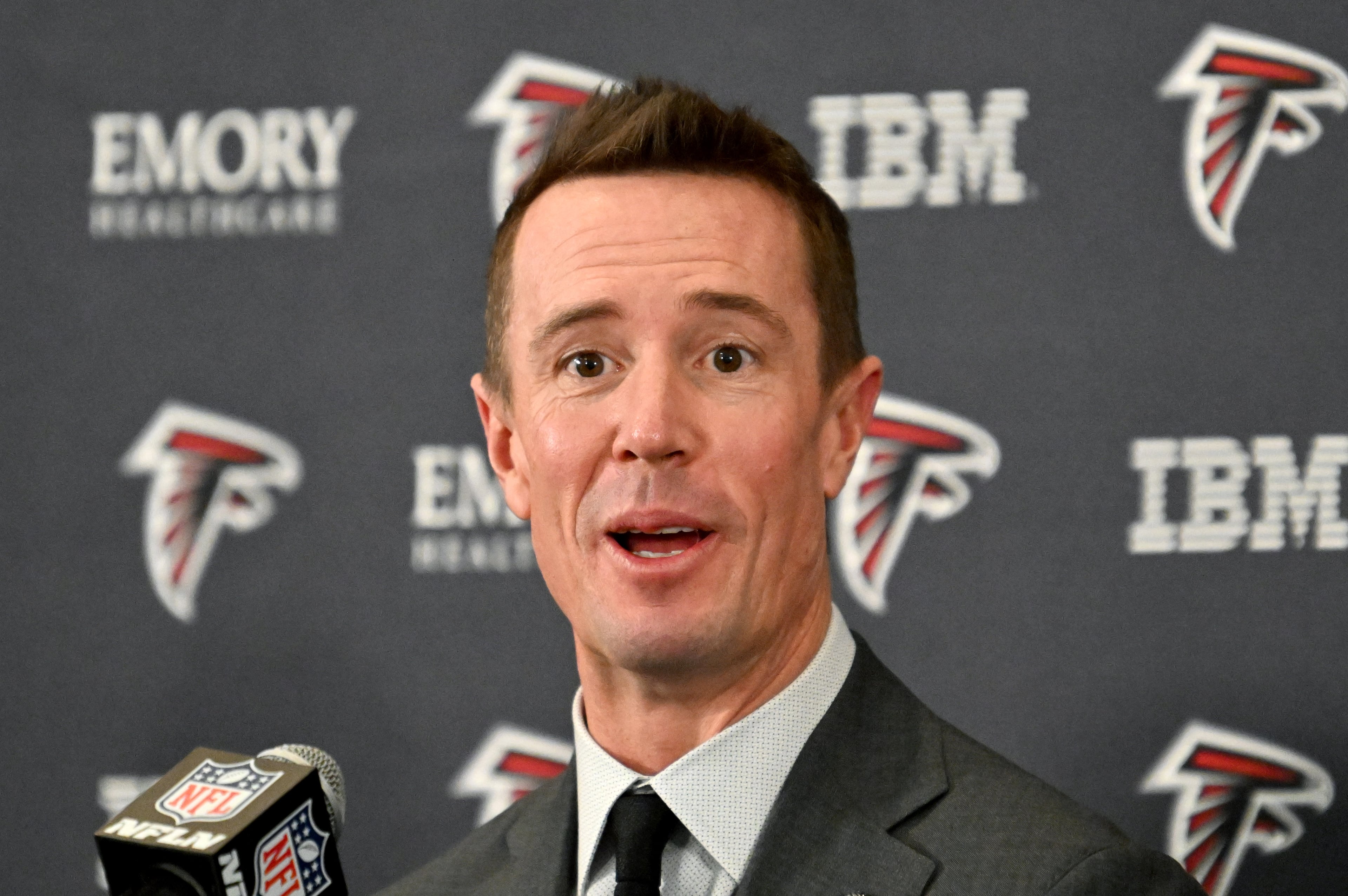Rise up: Falcons stadium price now at $1.4 billion
MOST EXPENSIVE NFL STADIUMS
Stadium / Team / Cost
MetLife Stadium / New York Giants, Jets / $1.6 billion
New Atlanta stadium* / Atlanta Falcons / $1.4 billion
AT&T Stadium / Dallas Cowboys / $1.3 billion
Levi’s Stadium / San Francisco 49ers / $1.3 billion
New Minneapolis stadium* / Minnesota Vikings / $1 billion
* - under construction, not yet named
Go to myAJC.com for extensive coverage of the new Falcons stadium, including the the latest news and architectural renderings and a look at marquee events being pursued for the facility slated to open in 2017.
The cost of the new Atlanta Falcons stadium has jumped to $1.4 billion, which will make it the second most expensive NFL stadium ever built.
The Falcons on Tuesday unveiled their latest — and last, they vowed — budget for the retractable-roof downtown stadium, showing a $200 million increase from their previous estimate. The team attributed the hike largely to more detailed plans and rising material and labor costs.
The increase won’t affect the amount of taxpayer money that goes into the project, leading the Georgia World Congress Center Authority board to approve the new budget by a vote of 13-1. But the higher cost raised questions at Tuesday’s authority meeting. Dissenting board member Taz Anderson wondered how much the Falcons will attempt to pass along to fans through the planned sale next year of personal seat licenses.
“It would seem to me if you’ve got more costs, you might have to raise the (price) of those licenses,” Anderson said.
The Falcons say PSL prices haven’t been finalized, but insisted the higher stadium cost won’t be the determining factor.
“I don’t think anything has changed with our approach on our PSL program,” Falcons executive vice president and chief financial officer Greg Beadles said in an interview. “We’ve got a wide variety of (revenue) sources.”
Personal seat licenses — one-time fees charged for the right to buy season tickets — have run into tens of thousands of dollars for prime seats in other recently built NFL stadiums.
Told by GWCCA executive director Frank Poe that the seat-license plan will be presented to the board before sales begin early next year, Anderson replied: “I keep hearing that. … But we don’t have it yet, and we really don’t know what the terms of that are.
“I just don’t want this board to be put in the position of having approved this $1.4 (billion) price and have us in any way be associated with that extra $200 million,” Anderson said. “I’m going to tell you, somebody is going to get blamed.”
Board member Glenn Hicks, who voted in favor of the increased budget, said after the meeting that the state agency has done its due diligence to ensure the taxpayer contribution will remain the same regardless of the final price.
“We get a more valuable property for the same (public) dollars invested,” Hicks said. “I think unfortunately if you investigate construction pricing, both on the labor and the materials side, they have moved in an unfavorable way, and that’s what everybody is dealing with.”
At $1.4 billion, the stadium will be topped in cost only by $1.6 billion MetLife Stadium in East Rutherford, N.J., which the New York Giants and Jets share. The new pricetag will exceed those of the next most expensive NFL venues: the Dallas Cowboys’ AT&T Stadium in Arlington, Texas, and the San Francisco 49ers’ Levi’s Stadium in Santa Clara, Calif., both of which cost $1.3 billion.
Robert Boland, a professor of sports business at New York University, said the Falcons’ budget increase was predictable.
“Costs go up as estimates become real,” Boland said. “The ultimate goal is to make sure that when you get into the stadium and you walk around, you can see that value.”
The Falcons’ expanded budget calls for $1.078 billion in “hard costs” of construction, such as labor and materials, and $322 million in soft costs, such as architectural, engineeering and legal fees and contingency funds.
The Falcons’ agreement with the GWCCA and the City of Atlanta calls for $200 million in proceeds from bonds backed by Atlanta hotel-motel taxes to go toward the cost of building the stadium. The Falcons are responsible for the remainder, including any cost overruns, and plan to cover it through a variety of sources including debt, PSLs, naming rights, sponsorships and $200 million in NFL funding.
Poe, the GWCCA executive director, said the Falcons have submitted a letter from Bank of America vouching for the team’s ability to fund its share.
This is the second time the Falcons have increased the stadium’s price tag by $200 million. In October 2013, they submitted a $1.2 billion budget to the GWCCA that was up from a previous $1 billion ballpark estimate. The Falcons attributed last year’s increase to an evolving and complex design, but attributed Tuesday’s rise mainly to having more accurate prices.
“The 1.2 billion number … was a preliminary budget before we had all of our drawings complete,” Beadles said. “We have now completed that; we have had our general contractor price it out. … Labor and materials are all up, so that definitely affected our price.”
Asked in an interview if it’s realistic for Falcons fans to assume a more expensive stadium will mean higher prices for them to bear, Beadles said: “I certainly see how people would say that, but we’ve got to price the PSLs in a way that the fans are accepting of it and can afford it and can pay it. The amount of money we’re putting in as cash is certainly going up. The amount of debt we will take on will go up.”
GWCCA board chairman Tim Lowe said he doesn’t think the bulk of the increase will be passed along to fans.
“I don’t think it’s going to make that big a difference in the price of the seats at the end of the day,” Lowe said. “The majority of the revenue that comes into a facility like this is on the advertising side, not on the seat price.”
The GWCCA will own the stadium, but the Falcons will operate it and retain the revenue it generates. The team will pay the GWCCA $2.5 million in annual rent, escalating 2 percent per year.


